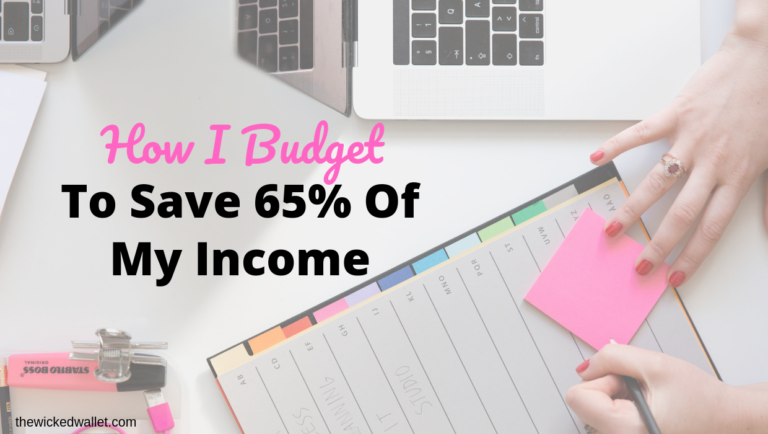Personal finance writers far and wide continuously rant about the importance of a budget. And with new budget methods and strategies being released on what seems like a daily basis, there should be a type of budgeting for everyone right?
Let’s do a little poll here…
Have you ever actually sat down and created a budget? How long did you stick to that budget?
The overwhelming majority of people have never created a budget and those who have tried to create one usually don’t end up sticking with it for very long. In fact, according to this Debt.com article, only 1/3 of American’s have created a budget. Only slightly less than 1/3 (30%) have created a long-term financial plan (investments, goals, etc.).
So if personal finance writers consistently say that budgeting is the first step on your path to financial freedom what happens if you can’t get past the first step? And why aren’t the majority of American’s budgeting?
While I agree with these claims that budgeting really can turn around your finances, I don’t think it has to be as complex and stress inducing as most budgets we see advertised.
Lets dive deeper into my budgeting history.
When I first started budgeting, I began by using the zero-based budgeting method. This strategy entails giving every single penny a specific job. That’s right and no rounding allowed. You start with the exact amount of income you make every month and subtract everything from savings, bills, food, etc. until you get to zero.
The point of this strategy is to see exactly where all of your money is going. I found it incredibly beneficial to break any emotional spending habits (mostly clothes shopping) when I saw the percent of my hard earned money that was going just towards clothes!
Although this strategy provided me with the structure I needed to gain a better grasp on my finances, I didn’t last long at it. It was demanding. It took up hours of my time and despite the joy I got from watching my savings rate go up, I couldn’t help but think there must be an easier way.
Good news! There is a MUCH easier way.
Some call it the Anti-Budget, some call it the Easiest Budget Ever, but I like to call it my lazy budget.
Don’t be fooled by these names, you are still budgeting and really actually bettering your financial health and habits!
Anyways, back to the method. It sure is easy, ready for this? You take your monthly income and subtract any savings. The leftover is your spending. BOOM. Done – told you it was easy.
Let’s evaluate this further. So if you bring home $5,000 a month after taxes and you want to save 50% of your income, that means you first take $2,500 to put towards savings and the remaining $2,500 goes towards any spending.
Savings in relation to this budgeting strategy means investing in retirement accounts, putting money into a savings account, making EXTRA monthly payments towards debt, etc.
The spending portion is made up of categories like bills, paying the minimum on your monthly debt, groceries, eating at restaurants, etc.
The Goal is to Prioritize Savings
This method is meant to prioritize savings. It helps to show you that you can easily save at a high rate however you may have to cut down on some of your “spend”. Maybe a car loan isn’t a good idea? Maybe you are eating out far too much? This budget will prove to you that you can save at whatever rate you want, it just depends if you are willing to sacrifice by cutting down on any extra spending.
This budget is incredibly simple and if I have been able to stick with it, anyone can. Give it a whirl and let me know your thoughts in the comments.
Find out how to save on your grocery bill and how to cut your cable bill which will in turn help you free up more money to put into savings!
What Is A Healthy Savings Rate
While saving any money is good, the more you can save the better. The majority of my financial planning textbooks would recommend anywhere between 10-15% but as you can see by the title of this post, I am a believer that you should save as much as you possibly can.
Try to start saving at least 20% of your income. You will be shocked at how easy this is. Then slowly bump it up by 1%, 5% and even 10% once you become addicted to watching your savings rate grow.
And of course, would it really be a money saving post if I didn’t emphasize the importance of putting money into an emergency fund?
Other Helpful Budget Hacks
It’s 2019, it is time to take advantage of all the free apps we have available to us at our fingertips. Apps like Mint and Personal Capital can really help you track your spending habits so you can see where exactly you may need to cut to help amp up your savings rate. Digit will help you save your emergency fund or any other savings account.
P.S. This Digit link gives you $5 to put towards your savings goals!
I like to automate most payments and savings. This makes the method even more true to its “lazy” name. (I swear, the more I learn about personal finance – the lazier I get).
Jake and I have weekly money meetings. Cheesy – I know. But it honestly really helps us stay on track and motivated. We give each other positive reinforcement and also encourage each other to save more. It is proven that having an accountability partner will help maximize your potential for success. Go find your accountability partner!
Once you do have an accountability partner, try doing some saving challenges or no spend challenges. Whoever has less transactions in a week wins or whoever saves a greater percentage of their money wins!
Learn more on staying focused and motivated here!
Final Thoughts
As you can see, I take a bit more of a laid back approach to budgeting. I like to try to keep things as simple as possible, it helps me stay motivated and focused on the larger goal – financial independence. Being in the weeds, or details if you will, really drags me down. Spend the extra time side hustling, learning a new skill or hanging out with family. Don’t spend it analyzing where every single penny is going.
That being said, give this lazy budgeting strategy a go and let me know if it works for you! If you have any other budget tips and tricks – please share them in the comments so we can all learn from each other!
If you want to learn about other budgeting methods, check out this post on the 7 popular budgeting strategies by top finance bloggers.



